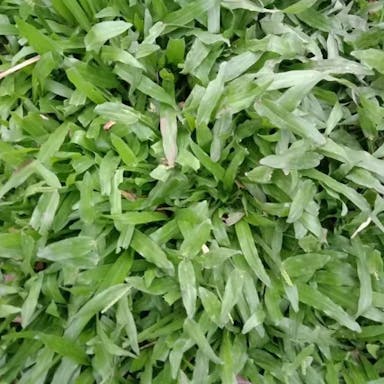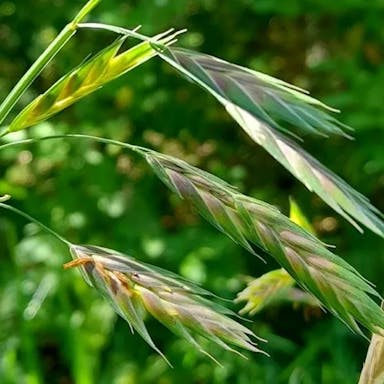Smilo thrives in full sun to partial shade, requiring at least 6 hours of direct sunlight daily. It exhibits moderate cold tolerance, able to withstand temperatures as low as 20°F (-6°C). It prefers warm climates and is tolerant of high temperatures, with an optimum temperature range between 65-85°F (18-29°C). During summer, ensure adequate watering to prevent dehydration. In winter, protect from frost by moving indoors or covering with a frost cloth. Place Smilo in a location with well-draining soil and good air circulation. It benefits from regular pruning to maintain shape and promote healthy growth. Avoid overwatering to prevent root rot.
Smilo
- Scientific name
- Piptatherum miliaceum
Basic Information
- Poaceae Family Piptatherum Genus Smilo Species
- Poaceae > Piptatherum > Piptatherum miliaceum
- 83%
- The Completeness of This Encyclopedia
Please help us complete the encyclopedia, Terrarium is a encyclopedia service to be completed with everyone in the world. Currently, this page is 83% complete. For more information on how to contribute, please click here.
- Graminoid
- Height
- 100cm ~
- Flower Color
- Leaf Color
- Anthesis
- summer
- Sunlight Exposure
Full Sun Long hours of sunlight from morning to afternoon Partial Shade A location in the shade of a tree or where either the morning or afternoon is shaded Full Shade A place where there is no direct sunlight
- Full Sun
- Hardiness Zones
This is an indicator to know to which zone each plant can winter. Knowing the zone of each plant gives you an idea of the cold temperature resistance when grown in the ground without a roof. 2: -42.7 to -40.0 3: -39.9 to -34.4 4: -34.3 to -28.9 5: -28.8 to -23.3 6: -23.2 to -17.8 7: -17.7 to -12.2 8: -12.1 to -6.7 9: -6.6 to -1.1 10: -1.0 to 4.4 11: 4.5 to 10.0
- 7
- Cold resistance
- Fair
- Heat resistance
- Good
- Habitat of origin
- Europe
- Growth Rate
- Normal
What is Smilo (Piptatherum miliaceum)?
What is Smilo (Piptatherum miliaceum)
Flower meaning
Smilo thrives in well-draining soil with a pH level between 6.0 and 7.0. It requires a balanced fertilizer with an N-P-K ratio of 10-10-10 for optimal growth. Fertilizer should be applied in early spring before new growth begins, then again in mid-summer to support flowering. Apply fertilizer at a rate of 1 tablespoon per square foot of soil. Avoid over-fertilizing as it can lead to nutrient imbalances and damage the plant. Regularly check the soil quality to ensure it remains loose and fertile. Organic matter such as compost can be added to improve soil structure and nutrient content.
Calendar of Smilo (Piptatherum miliaceum)
Calendar
The flower language commonly used in America for the plant Smilo is as follows: - Smilo represents "admiration" and "appreciation." - It symbolizes "gratitude" and "thankfulness." - Smilo conveys the message of "friendship" and "loyalty." One typical example is: - Giving Smilo to someone signifies deep admiration and appreciation for their qualities or actions.
How to grow Smilo (Piptatherum miliaceum)
Watering
Smilo plants benefit from regular pruning to maintain their shape, promote new growth, and improve overall health. Pruning is essential to remove dead or diseased branches, enhance air circulation, and prevent overcrowding. The best time to prune Smilo is in late winter or early spring before new growth emerges. When pruning, use clean, sharp tools to make precise cuts at a 45-degree angle just above a bud or lateral branch. Remove any crossing or rubbing branches to prevent damage. After pruning, water the plant thoroughly and apply a balanced fertilizer to support recovery and new growth. Avoid over-pruning, as it can weaken the plant. Regular maintenance pruning will help Smilo thrive and flourish.
Soil and Fertilizer
Smilo can be propagated through seeds, division, and cuttings. Seeds are sown in well-draining soil, kept moist, and placed in a warm, sunny location. Division involves separating the plant into smaller sections with roots attached. Cuttings are taken from healthy stems, dipped in rooting hormone, and planted in a suitable growing medium. Leaf cuttings can also be used by taking a healthy leaf, placing it in a moist growing medium, and waiting for roots to develop. To ensure successful propagation, it is recommended to use a combination of methods to increase the chances of success.
Sunlight and Place
Smilo, a plant that thrives in pots, should be potted in well-draining soil to prevent waterlogging. Ensure the pot has drainage holes to avoid root rot and place it in a location with bright, indirect sunlight. When repotting, choose a slightly larger pot to accommodate growth, and refresh the soil to provide nutrients. Mist the leaves occasionally to maintain humidity levels, and fertilize during the growing season. If the plant shows signs of wilting or yellowing leaves, check for overwatering or inadequate light. Prune any dead or damaged foliage to encourage new growth.
Advanced Information of Smilo (Piptatherum miliaceum)
Pruning
Smilo is susceptible to various pests and diseases, including aphids, spider mites, and powdery mildew. These pests can weaken the plant by sucking sap or causing damage to the leaves. Preventive measures include regularly inspecting the plant for any signs of infestation, maintaining proper air circulation, and avoiding over-fertilization. Additionally, using insecticidal soap or neem oil can help control aphids and spider mites. Powdery mildew, a fungal disease, thrives in humid conditions and can be prevented by ensuring good air circulation around the plant and avoiding overhead watering. Withering of Smilo can be caused by severe infestations of pests or diseases, leading to a decline in the plant's overall health. Early detection and prompt treatment are crucial in managing these issues to prevent further damage to the plant.
Planting and Harvest
Smilo flowers typically bloom in the spring season in the United States. The plant is known to bloom best during the months of April and May. The blooming period of Smilo usually lasts for about 2 to 3 weeks. To ensure longer blooming, it is recommended to provide adequate sunlight, water, and well-draining soil for the plant. Additionally, deadheading faded flowers can promote continuous blooming. Smilo's flowering time is influenced by various factors such as temperature, light, and soil conditions. The plant's blooming season may vary slightly depending on the specific region within the United States. It is essential to monitor these conditions to optimize the blooming period of Smilo.
Propagation
Smilo seeds should be selected based on the desired characteristics such as color, size, and growth habit. It is essential to choose seeds from reputable suppliers to ensure quality and authenticity. When selecting Smilo seedlings, look for healthy plants with vibrant green leaves and strong stems. Avoid seedlings with signs of disease or pest damage. There are different varieties of Smilo, each with unique features. For example, variety A is known for its drought tolerance, while variety B is prized for its ornamental flowers. Carefully consider your specific needs and preferences when choosing between Smilo varieties. Ensure that the selected variety is suitable for your climate and growing conditions.
Pests and Diseases
Smilo: Piptatherum miliaceum, commonly known as Smilo, is a perennial grass native to Europe and Asia. It belongs to the Poaceae family and is characterized by its dense, tufted growth habit. The plant typically reaches heights of 30-60 cm and produces narrow, linear leaves. Smilo: The flowers of Piptatherum miliaceum are small and inconspicuous, often appearing in spikelets. The color of the flowers can vary from pale green to purple. This plant is known for its ornamental value in landscaping due to its delicate appearance and graceful movement in the wind. Smilo: Piptatherum miliaceum is relatively easy to grow and thrives in well-drained soil and full sun. It is commonly used in ornamental grass gardens, borders, and rock gardens. While it does not produce any significant fruit, its aesthetic appeal and low maintenance requirements make it a popular choice among gardeners.
Habitat of Smilo (Piptatherum miliaceum)
Habitat
Toxicity of Smilo (Piptatherum miliaceum)
Health Benefits
- edible
- Inedible
- Toxic
- No toxicity
NO DATA
Toxic for dogs and cats
NO DATA
Q&A of Smilo (Piptatherum miliaceum)
- Is there a recommended way to choose Smilo?
For optimal growth, Smilo should be watered every 7-10 days during the growing season. Ensure the soil is evenly moist but not waterlogged, allowing excess water to drain. During the dormant period, reduce watering to every 2-3 weeks to prevent root rot. Check soil humidity by inserting a finger 1-2 inches deep; water when the topsoil feels dry. Adjust watering frequency based on environmental conditions such as temperature and humidity. Consistent monitoring and adjusting watering practices accordingly will help maintain the health of Smilo.
0
0












